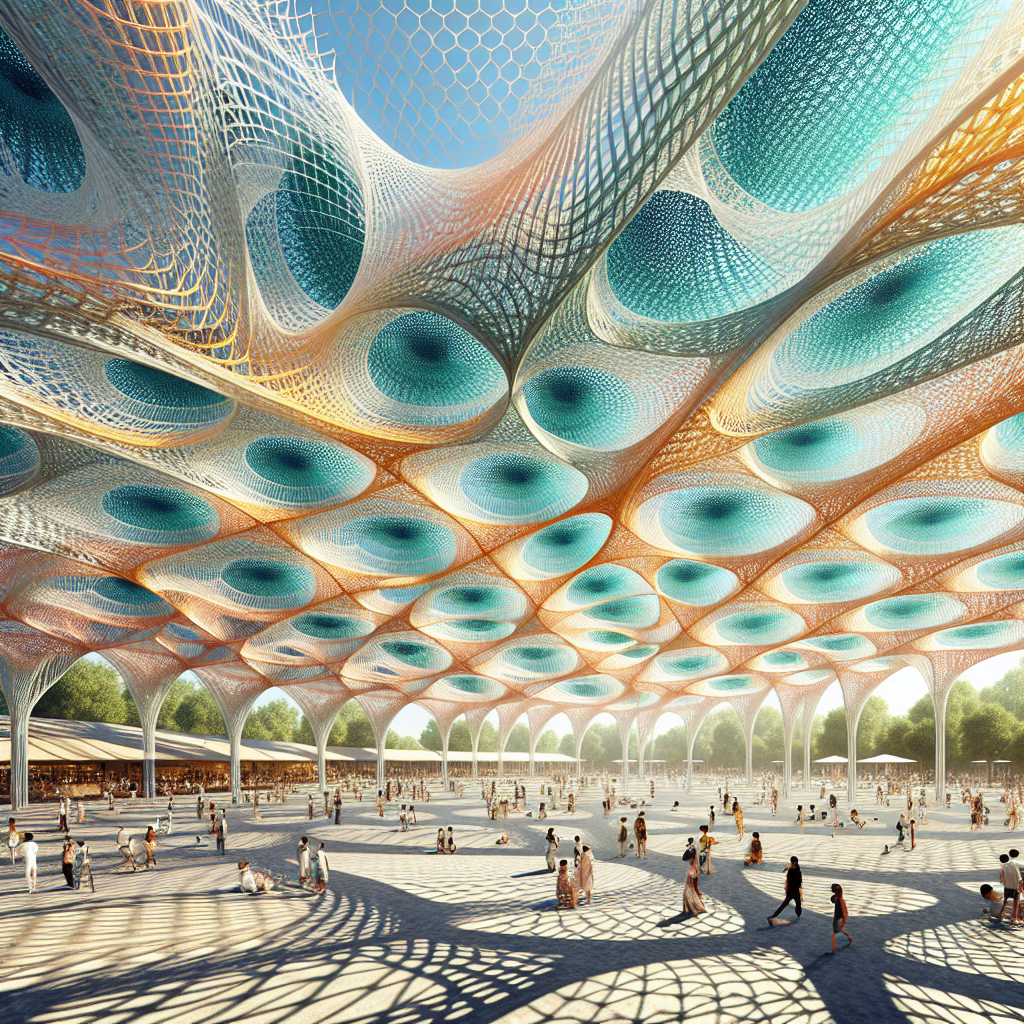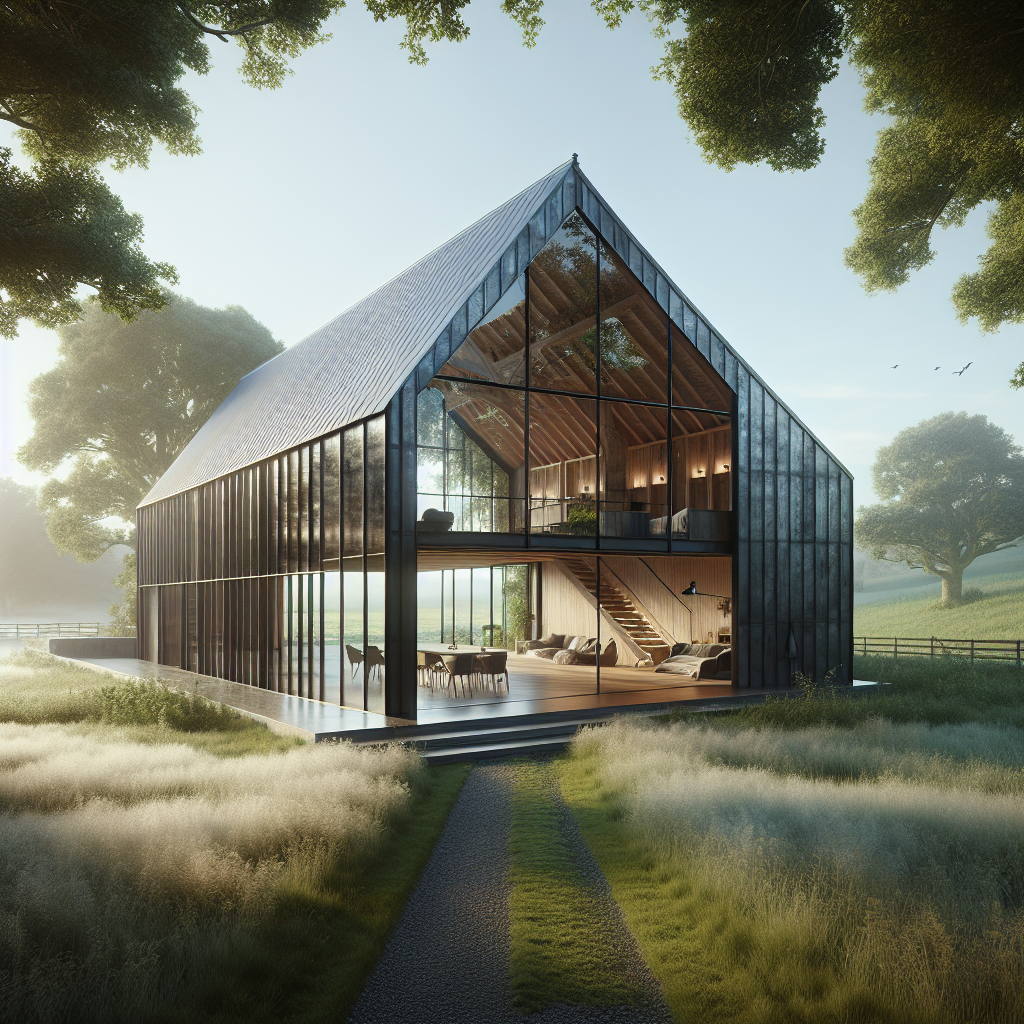LED-woven corridors ephemeral: sculptures changing nightly cityscapes

LED-Woven Corridors Ephemeral: Sculptures Changing Nightly Cityscapes
As dusk descends upon the world’s most forward-thinking cities, a new kind of architecture awakens—one that breathes, glows, and dissolves with the sunrise. These LED-woven corridors—ephemeral, sculptural installations that merge textile craft with digital intelligence—are transforming the urban night into a living gallery. They are not buildings in the traditional sense, but temporal architectures: woven light structures that reinterpret the corridor as both pathway and performance, guiding citizens through an ever-shifting choreography of illumination.
The Rise of Ephemeral Urbanism
Ephemeral architecture has long been a testing ground for innovation. From the temporary pavilions of the World’s Fairs to today’s digitally responsive installations, architects have used impermanence as a canvas for experimentation. The LED-woven corridor represents the latest evolution of this lineage—where light, fabric, and code converge to create transient yet deeply affective environments.
These corridors are typically constructed from flexible mesh or textile panels embedded with programmable LED filaments. By day, they appear as delicate lattices of translucent fiber; by night, they erupt into dynamic color gradients, algorithmic animations, and responsive light waves that react to movement, sound, or even air quality. The result is a form of urban choreography—a dialogue between architecture and atmosphere, between the passerby and the city itself.
From Static to Sentient: The Materiality of Light
What distinguishes LED-woven corridors from traditional lighting design is their material intelligence. Each thread of light acts as both structure and signal, transforming illumination into a tactile, spatial medium. Designers such as the London-based studio Loop.ph and Tokyo’s Rhizomatiks have pioneered this intersection of digital craft and environmental design, creating immersive corridors that blur the boundaries between architecture, textile, and performance art.
In this sense, these installations echo the ideas explored in interactive installations—spaces that invite participation rather than passive observation. Yet LED-woven corridors go further: they transform the very fabric of the city into a responsive organism. The corridors can pulse in rhythm with local traffic data, shimmer according to wind speed, or even dim in harmony with circadian cycles, aligning urban lightscapes with human biology.
Night as Canvas: Reimagining the Cityscape
Across cities like Seoul, Amsterdam, and Dubai, LED-woven corridors are redefining how we experience public space after dark. They are part of a broader movement toward adaptive urban illumination—a concept that merges art, sustainability, and social engagement. In Seoul’s Cheonggyecheon Stream, for instance, a series of light-threaded walkways transforms the riverside into a kinetic gallery, while in Amsterdam’s Light Festival, ephemeral corridors connect historic bridges through ribbons of programmable light.
These installations echo the principles of public art as urban transformation, using light not merely as decoration but as a civic gesture. They foster community interaction, invite reflection, and challenge the notion of permanence in architecture. As the boundaries between digital and physical dissolve, the city becomes a mutable organism—its identity rewritten nightly through luminous threads.
Technological Weaving: Craft Meets Code
The technological backbone of LED-woven corridors lies in the convergence of smart textiles and parametric design. Architects employ computational algorithms to generate intricate weaving patterns that optimize both structural integrity and visual rhythm. Each LED filament is individually addressable, allowing designers to choreograph light sequences that respond to environmental sensors or human presence.
This synthesis of craft and computation mirrors the ethos of parametric design, where form is not fixed but continuously recalibrated by data. In some cases, AI-driven systems analyze pedestrian flow to adjust corridor brightness and color temperature, enhancing safety while minimizing energy consumption. The result is a new kind of architectural intelligence—one that learns, adapts, and evolves.
Sustainability and the Ethics of Ephemerality
While the visual allure of LED-woven corridors is undeniable, their sustainability credentials are equally compelling. Many installations utilize low-energy LEDs powered by renewable sources, with modular components designed for reuse or recycling. This aligns with the growing movement toward zero-waste architecture and circular design, where temporary structures are conceived with minimal environmental footprint.
In this respect, LED-woven corridors resonate with the ethos of zero-waste masterpieces—designs that embrace impermanence as a sustainable virtue. Their ephemeral nature challenges the construction industry’s obsession with longevity, proposing instead a model of renewable temporality: architecture that exists in cycles, not centuries.
Human Experience: Between Light and Emotion
Beyond their technological sophistication, the true power of LED-woven corridors lies in their emotional resonance. They reintroduce wonder into the urban experience, transforming routine commutes into sensory journeys. The interplay of color, texture, and motion evokes a sense of calm and curiosity, echoing the psychological principles of environmental psychology.
For many, walking through these corridors feels akin to entering a dreamscape—an architecture of emotion rather than enclosure. The light becomes a form of urban empathy, responding to the collective pulse of the city. In an era where digital screens dominate our visual field, these installations reassert the power of physical space to move, connect, and inspire.
Case Studies: Cities in Flux
In Dubai’s Design District, the “Luminous Passage” by Atelier Brückner reimagines the corridor as a living sculpture. Composed of 20,000 woven LED fibers, the installation shifts from cool blues to warm ambers in response to ambient temperature, creating a synesthetic link between climate and color. Meanwhile, in Copenhagen, the “Light Threads” project transforms a disused underpass into a glowing tunnel of woven light, encouraging pedestrians to reclaim forgotten infrastructure.
These projects underscore a global trend toward responsive urban design—architecture that adapts not only to environmental conditions but also to social rhythms. As cities become denser and more data-driven, such ephemeral interventions offer a poetic counterpoint: a reminder that the most memorable spaces are often those that refuse to stand still.
The Future of Luminous Urbanism
As we move deeper into the 2020s, the fusion of light, fabric, and code will continue to redefine the architectural lexicon. Emerging materials such as e-textiles and biodegradable polymers promise even greater flexibility, enabling corridors that can self-illuminate, self-heal, or even biodegrade after use. Designers are already exploring bioluminescent threads and solar-woven fabrics that merge sustainability with spectacle.
These innovations align with broader shifts in urban design—toward cities that are not only smart but sensory. As explored in bioluminescent lighting in architecture, the next frontier lies in creating environments that respond to human emotion and ecological context alike. LED-woven corridors are merely the beginning of this luminous evolution: a glimpse into a future where architecture is less about permanence and more about presence.
A New Language of Light
In the end, LED-woven corridors represent more than technological novelty—they signal a cultural shift in how we perceive architecture itself. No longer confined to static forms, buildings are becoming performative, adaptive, and ephemeral. The corridor, once a space of transition, becomes a space of transformation. Each night, the city rewrites its story in threads of light, weaving a tapestry that is as fleeting as it is unforgettable.
As the world’s metropolises continue to evolve, these glowing pathways remind us that architecture’s most profound role may not be to endure, but to illuminate the moment.
Keywords: LED-woven corridors, ephemeral architecture, urban illumination, responsive design, smart textiles, sustainable lighting, interactive installations, parametric design, luminous urbanism.








